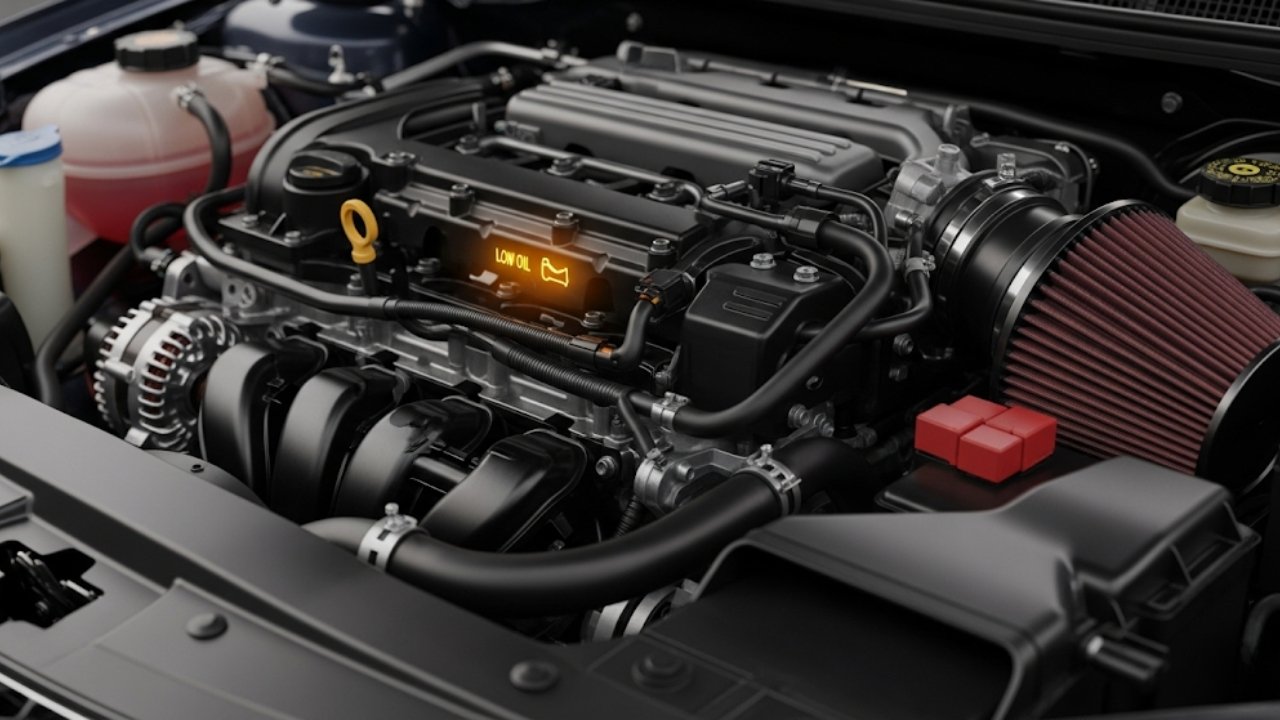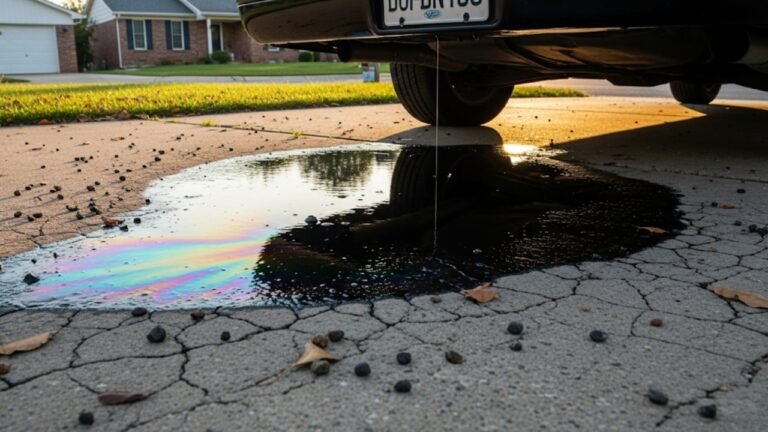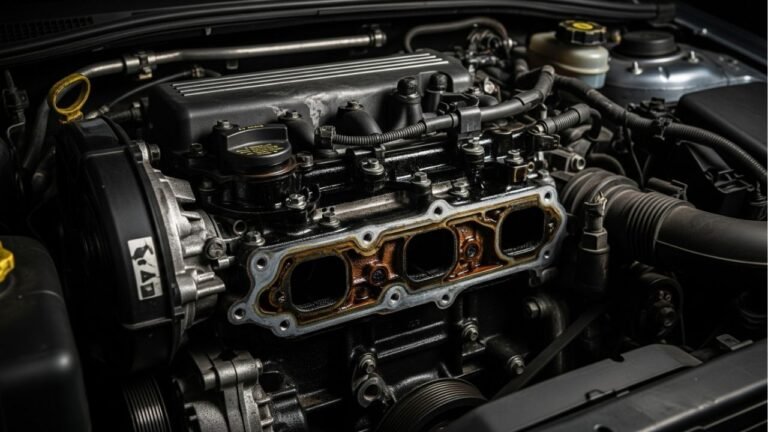What Happens If You Run a Car Low on Oil?

Let me tell you a quick story. A few years ago, I was driving my old sedan to work every day, convinced it was a tank. Reliable, loyal, never caused any real drama. Until one day, on a highway trip, I noticed a strange knocking sound from under the hood. The oil light blinked. I ignored it. Big mistake. Within minutes, the car sputtered, slowed down, and eventually died. The mechanic later told me I had been running low on oil for weeks, and the engine gave out. I learned that oil isn’t just a fluid—it’s the heart of your car’s survival.
If you’re reading this and wondering, what happens if you run a car low on oil, you’re already smarter than I was. This article will guide you through everything—from how engines suffer from low oil to how to prevent costly repairs or total failure. Grab a coffee and let’s dive into what every car owner needs to know.
Why Engine Oil Is the Unsung Hero of Your Car

Here’s what engine oil actually does:
-
Lubricates moving parts so they don’t wear each other out.
-
Reduces heat by absorbing it and carrying it away.
-
Prevents corrosion by coating metal with a protective layer.
-
Traps dirt and debris so they don’t damage the engine.
-
Maintains pressure in the hydraulic systems (like valve lifters).
And all this happens under your hood while you listen to music or sip your coffee.
Let’s visualize it in a simple table:
| Function | Without Enough Oil |
|---|---|
| Lubrication | Metal parts grind and wear down |
| Heat Dissipation | Engine overheats |
| Corrosion Protection | Exposed parts start to rust |
| Cleaning | Dirt clogs up systems and causes buildup |
| Pressure Control | Hydraulic systems fail or misfire |
Signs You’re Running Low on Oil (Don’t Ignore These!)
Honestly, your car is pretty good at warning you—it just speaks a different language. If you notice these signs, your car may be running low on oil, and it’s time to check under the hood before it’s too late.
Common Symptoms:
-
Oil Warning Light: The clearest sign. Don’t wait.
-
Knocking or Ticking Noise: Usually means metal parts are rubbing.
-
️ Overheating Engine: Without oil, heat has nowhere to go.
-
Drop in Performance: Car feels sluggish or struggles to accelerate.
-
Burning Smell: Often smells like something cooking under the hood.
I’ve personally experienced the ticking noise. It started faintly and got louder day by day. At first, I thought it was just a loose belt or something minor. Nope—it was the sound of an engine crying for help. By the time I reacted, it was nearly too late.
What Happens If You Run a Car Low on Oil?
Alright, let’s get to the heart of it. If you keep driving with low oil, it doesn’t just “go away.” Your engine is being damaged every second it operates without enough lubrication. And the worst part? The damage builds up silently, until one day—boom. Total failure.
Here’s what actually happens, step-by-step:
1. Oil Starvation Starts the Fire
When there isn’t enough oil in the engine, parts don’t get fully coated. That means pistons, bearings, and camshafts start making direct contact. Friction goes up. Heat rises. Wear accelerates.
2. Friction Eats Your Engine Alive
Metal parts like connecting rods and crankshafts rely on oil to stay separated. Without it, they scrape against each other, which causes microscopic damage at first, then cracks, and eventually warping.
3. Overheating Warps Components
Engines are precision-made. Heat makes metal expand. When your engine overheats due to low oil, parts like the cylinder head can warp, gaskets can blow, and cooling systems get overwhelmed.
4. Complete Engine Seizure
This is the final nail. When the engine locks up, it’s usually because a piston got stuck or a bearing failed. The engine won’t turn. You’ll need a rebuild—or worse, a full replacement. That’s thousands of dollars.
How Much Oil Is “Too Low”?
Here’s a tip I wish someone had told me earlier: being low on oil doesn’t mean “empty.” Even being down 1 quart can start causing issues, depending on your car’s design. Most vehicles use 4 to 6 quarts in total, so being 25% low can be dangerous.
Here’s a simple guide:
| Oil Level | Risk Level | What to Do |
|---|---|---|
| Full | ✅ Safe | No worries |
| Halfway on Dipstick | ⚠️ Moderate Risk | Top off soon |
| Below Min Mark | ❌ High Risk | Add oil immediately |
| No Oil on Dipstick | Critical – Stop Driving! | Tow to a mechanic now |
Checking your oil is simple. Grab a paper towel, pull out the dipstick, wipe it clean, dip it back, and check where the line falls. Do this once a month, or every 500–1000 miles if you drive a lot.
️ Real-World Damage: What Could Go Wrong?
It’s tempting to think, “One drive won’t hurt.” But let me put it this way—low oil is like a ticking time bomb under your hood. You won’t always feel the damage until it’s already done.
Here are some real things that can break:
-
Pistons and Rings: They can seize or crack.
-
Rod Bearings: May spin and destroy the crankshaft.
-
️ Oil Pump: Can run dry, lose pressure, and fail.
-
Cylinder Head: Warping causes coolant and oil to mix.
-
Head Gasket: Can blow, leading to major leaks.
One friend of mine drove his car for weeks with the oil light blinking. He thought it was just a faulty sensor. When he finally got it checked, the mechanic said the engine block had a hairline crack from overheating. Repair cost? $4,200. And it all started because he ignored low oil.
The Snowball Effect: Small Mistake, Big Consequences
Let’s say you drive 50 miles with low oil. Not a huge deal, right? But now you’ve introduced metal shavings into your system. These tiny fragments float around in the oil and scrape everything they touch.
Eventually, your oil filter clogs, reducing pressure. The oil pump works harder. The engine gets hotter. And then boom—something snaps. That’s how a $5 top-up can turn into a $5,000 repair.
Remember the old saying: “An ounce of prevention is worth a pound of cure.” When it comes to engine oil, that’s gospel truth.
How to Check and Top Off Your Car’s Oil Like a Pro (Even If You’re Not One)
Checking your car’s oil might sound intimidating, but trust me—it’s easier than making instant noodles. You don’t need a mechanic’s degree or fancy tools. Just follow these steps:
️ Step-by-Step Guide:
-
Park on Level Ground
Make sure the car is cool and flat. Wait at least 10 minutes after driving so the oil can settle. -
Open the Hood
Pop the hood and secure it. Find the oil dipstick—it usually has a yellow or orange ring. -
Pull, Wipe, and Reinsert
Pull the dipstick out, wipe it clean with a cloth or tissue, and stick it back in fully. -
Check the Level
Pull it out again. You’ll see two marks: “min” and “max.” If it’s below the middle—or worse, near “min”—you’re running low on oil. -
Add Oil If Needed
Use the right oil type (your car manual will tell you). Pour slowly into the oil cap—about half a quart at a time. Recheck the level after every pour.
Do This Regularly
-
Every 1,000 miles if your car burns oil.
-
Every 2–4 weeks if you drive a lot.
-
Always before long trips.
️ How to Prevent Low Oil Problems Before They Happen
I’ve learned that prevention is cheaper than repair. Taking a few small steps can save you from massive engine bills.
✅ Simple Prevention Tips:
-
Schedule regular oil changes (follow your car’s interval, usually every 3,000–7,000 miles).
-
Check for oil leaks under the car or around the engine.
-
Use quality oil—cheap stuff may break down faster.
-
Fix warning lights ASAP. Don’t ignore oil pressure warnings.
-
Drive gently—hard acceleration burns oil faster.
-
Keep your engine clean. A clogged oil filter adds stress.
Even something as small as a $10 oil filter or a delayed oil change can make a big difference in your engine’s life span.
FAQs: What Everyone Asks About Low Engine Oil
Let’s tackle some of the most common questions people have. These answers are short, honest, and based on both research and real-world experience.
❓1. Can low oil cause a car not to start?
Yes, it can. If your oil level is critically low, the engine might seize or the sensors may block ignition to prevent damage. You may hear clicks or silence instead of cranking.
❓2. Is it okay to drive a short distance with low oil?
Not really. Even a few miles with low engine oil can create heat and friction. If you absolutely must drive, keep it under a mile and top up ASAP.
❓3. What should I do if my oil light comes on?
Stop the car immediately if it’s safe. Check the oil level. If it’s low, top it off. If it’s full but the light stays on, the issue may be pressure-related—call a mechanic.
❓4. Can low oil affect fuel economy?
Yes. Without enough oil, the engine works harder. This increases fuel consumption and wears parts faster. Think of it like running with no water—your body tires quicker.
❓5. How do I know which oil to use?
Check your owner’s manual or look under the hood. It will tell you the viscosity (like 5W-30) and type (conventional, synthetic). Using the wrong oil can hurt your engine.
❓6. What if I keep topping off but still lose oil?
That could mean an internal leak, worn valve seals, or burning oil inside the engine. It’s time for a mechanic to inspect things deeper.
❓7. How long can I drive with a quart low?
It depends on your engine size, but driving a long time with even one quart low reduces lubrication and builds heat. Don’t risk it—top it off right away.
❓8. Can an oil change fix low oil damage?
Unfortunately, no. An oil change won’t undo the harm caused by metal-on-metal contact or overheating. Once damage is done, parts may need repair or replacement.
Final Thoughts: Treat Oil Like a Lifeline, Not an Afterthought
If there’s one thing I hope you take away, it’s this: Oil is not optional. It’s the invisible force that keeps your engine breathing, moving, and cooling. When you run your car low on oil, it’s like running a marathon with no water or shoes. You might make it a few miles, but eventually, things fall apart.
Think of your engine like a living thing. It doesn’t speak your language, but it does give signs—noises, smells, lights. Don’t ignore them. I’ve been there, and I can tell you, the regret hits harder than any repair bill.
So, do your future self a favor:
-
Check your oil like you check your phone battery.
-
Keep a quart in your trunk—just in case.
-
Treat your car like a teammate, not just a tool.
Trust me, your engine will thank you—mile after mile, road after road.






